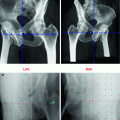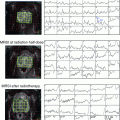Reference
No. Pts
Dose/fx size/# fxs
EQD2
α/β = 1.5 Gy (tumor) (Gy)
EQD2 α/β = 3 Gy (late effects) (Gy)
Med F/U (mos)
Risk class
% 5-year FFBF
Fonteyne et al. (2012)
113
55 Gy/3.4 Gy/16 fx
77.0
70.4
47
L-I-H
94
Kupelian et al. (2007)
770
70 Gy/2.5 Gy/28 fx
80
77
45
L-I-H
82
Leborgne and Fowler (2009)
130
78 Gy/2 Gy/39fx
78
78
49
L-I-H
90
89
61.5 Gy/3.1 Gy/20fx
80.8
75.0
L-I-H
88
Miralbel et al. (2012)
403
74.2 Gy/1.86 Gy/38.5fx
71.2
72.1
52
L-I-H
70
71
56 Gy/4 Gy/14 fx
88.0
78.4
41
L-I-H
78
Cowan et al. (2007)
325
50 Gy/3.1 Gy/16fx
65.7
61.0
84
L
77
Faria et al. (2011)
89
66 Gy/3 Gy/22fx
84.9
79.2
51
I
95
Livsay et al. (2003)
705
66 Gy/3 Gy/22fx
84.9
79.2
60
L-I-H
56
Higgins et al. (2006)
300
52.5 Gy/2.625 Gy/20 fx
61.9
59.1
58
L-I-H
45
Rene et al. (2010)
129
66 Gy/3 Gy/22fx
84.9
79.2
51
L-I
98
Thomson et al. (2012)
30
60 Gy/3 Gy/20fx
77.1
72.0
84
H
50
30
57 Gy/2.85 Gy/20fx
70.8
66.7
58
Ritter et al. (2001)
64.7 Gy/2.9 Gy/22fx
81.3
76.3
56
I
91.5
317
58.1 Gy/3.63 Gy/16fx
85.2
77.0
37
I
96.1 (3y)
51.6 Gy/4.3 Gy/12fx
85.5
75.3
28
I
98.7 (3y)
Martin et al. (2007)
92
60 Gy/3 Gy/20 fx
77.2
72
38
L-I-H
85
Lukka et al. (2005)*
466
52.5/2.625 Gy/20 fx
61.9
59.1
68
L-I-H
57.7
470
66 Gy/2 Gy/33 fx
66
66
L-I-H
62.3
Yeoh et al. (2011)*
108
55 Gy/2.75 Gy/20 fx
66.8
63.2
48
L-I-H
57.4
109
64 Gy/2 Gy/32 fx
64
64
L-I-H
55.5
Pollack et al. (2011)*
150
70.2 Gy/2.7 Gy/26 fx
84.2
80
>60
L-I-H
86.1
150
76 Gy/2 Gy/38 fx
76
76
>60
L-I-H
85.6
Kuban et al. (2010)*
101
75.6 Gy/1.8 Gy/42 fx
71.3
72.6
56
L-I
92
101
70.2 Gy/2.7 Gy/26 fx
84.2
80.0
L-I
96
Arcangeli et al. (2012)*
85
80 Gy/2 Gy/40 fx
80.0
80.0
70
H
79
83
62 Gy/3.1 Gy/20 fx
81.5
75.6
H
85
3 Results from Randomized Studies
3.1 Tumour Control
All published randomized phase III hypofractionation trials are also summarized in Table 1. In the Canadian study (Lukka et al. 2005), a total of 936 patients were randomized to receive 66 Gy in 33 fractions in 6.5 weeks or 52.4 in 20 fractions in 4 weeks, which corresponds to an equivalent dose given at 2.0 Gy per fraction (EQD2) of 61.9 Gy for an α/β of 1.5 Gy. None of the patients received ADT. There was a trend toward a better 5-year Freedom From Biochemical Failure (FFBF) rate in the conventional fractionation versus hypofractionation group (59.95 % vs. 52.95 %) with a hazard ratio of 1.18 (95 % CI of 0.99–1.41) with no difference to the overall survival (87.6 % vs. 85.2 %). In the Australian trial (Yeoh et al. 2011), 217 patients were randomized to receive 64 Gy in 32 fractions in 6.5 weeks or 55 Gy in 20 fractions in 5 weeks (EQD2 of 66.8 Gy for an α/β of 1.5 Gy), and none of the patients received ADT. There were no differences between the hypofractionated and conventional schedules with the estimated 5-year FFBF ± Freedom From Clinical Failure (FFCF) of 57.4 % versus 55 %, and overall survival of 86.4 % versus 84.1 %. The total dose delivered by both trials was less than 76–80 Gy, now considered a standard-of-care. Both were designed and performed before the studies suggesting a low α/β for prostate cancer (with no attempt to make the arms isoeffective), and did not provide any conclusive evidence with regard to outcomes (Lukka et al. 2005; Yeoh et al. 2011).
Another two randomized trials have been undertaken in the U.S. (Pollack et al. 2011; Kuban et al. 2010) and their results have only been reported in an abstract form. The randomized trial by Pollack et al. (2011), compared 76 Gy delivered in conventional 2.0 Gy fractions (CIMRT) to 70.2 Gy delivered in 2.7 Gy fractions (HIMRT) in 303 intermediate- and high-risk patients. At 5 years, no statistically significant difference in outcome was observed, with 5-year BF rates of 14.4 and 13.9 %, respectively, between the two fractionation schedules. Kuban et al. (2010), reported on a randomized trial comparing a conventional CIMRT of 75.6 delivered in 42 fractions to a hypofractionated HIMRT of 72 Gy delivered in 30 fractions for 204 patients, some of whom also received a contemporary ADT. No statistically significant difference in FFBF was observed between the former and latter fractionation groups, with 5-year rates of 92 and 96 %, respectively.
The randomized phase III trial by our group (Arcangeli et al. 2010) was designed to compare the effects of a conventional fractionation of 80 Gy at 2 Gy per fraction in 8 weeks versus a hypofractionation schedule of 62 Gy at 3.1 Gy per fraction in 5 weeks (4 fractions per week) to the prostate and seminal vesicles, using 3D-CRT, in patients with high-risk prostate cancer who were also receiving a 9-month ADT. The two arms were hypothesized to be isoeffective with regard to tumour control, assuming a fairly low α/β ratio of 1.5–1.8 Gy. The results of this trial have recently been updated (Arcangeli et al. 2012). At a median follow-up of 70 months, hypofractionation was only slightly better, with a nonsignificant improvement in actuarial FFBF compared to conventional fractionation, with 5-year rates of 85 % and 79 %, respectively (p = 0.065). No difference between the two fractionation schedules was detected in the 5-year rates of Freedom From Local (FFLF: 93 % vs. 91 %, respectively, p = 0.33) or Distant Failure (FFDF: 90 % vs. 85 %, respectively, p = 0.29). However, the analysis of a subgroup of patients stratified according to the prognostic factors showed that in the subgroup with a pretreatment PSA level of 20 ng/mL or less, hypofractionation was significantly better than conventional fractionation in all three endpoints, with 5-year rates of 95 % versus 83 % (p = 0.02), 100 % versus 92 % (p = 00.01), and 98 % versus 87 % (p = 0.04), for FFBF, FFLF, and FFDF, respectively (Table 2). Also in the subgroup with a Gleason Score ≥(4 + 3), hypofractionation was significantly better than conventional fractionation, but only for FFBF, with 5-year rates of 83 % versus 66 % (p = 0.01). For the entire population the actuarial analysis of survival showed no significant difference in either the overall or cancer specific survival between the short and long radiation schedules, with 5-year OS rates of 92 % versus 82 % (p = 0.16), respectively, and Cause Specific Survival (CSS) rates of 98 % versus 92 % (p = 0.13), respectively. In the subgroup with a pretreatment PSA of 20 ng/mL or less and in that with a T-stage ≥2c, however, the actuarial analysis of CSS, showed a significantly better outcome in the hypo than the conventional fractionation group, with 5-year rates of 100 % versus 89 % (p = 0.03), and 100 % versus 87 % (p = 0.01), respectively (Table 3). We also looked at mortality, by calculating the Hazard Risk of the Overall (OM) and Cancer Specific Mortality (CSM) as a function of time for both fractionation arms (Fig. 1). While CSM was found to be only a small fraction of OM in the hypofractionation arm, in the conventional fractionation arm most of the deaths resulted from prostate cancer. Hypofractionation was confirmed as a significant predictor of CSS by multivariate analysis (HR = 0.15, CL = 0.019–1.27).
Table 2
5-year freedom from failure rates according to prognostic factors in a randomized trial of conventional versus hypofractionated radiotherapy (Arcangeli et al. 2012)
FFF rates | Prognostic factors | Total | |||||
|---|---|---|---|---|---|---|---|
iPSA ≤ 20 | iPSA > 20 | GS ≤ (3 + 4) | GS ≥ (4 + 3) | T < 2c | T ≥ 2c | ||
Biochemical | |||||||
Convent | 83 | 72 | 94 | 66 | 85 | 74 | 79 |
Hypo | 95 | 73 | 88 | 83 | 89 | 83 | 85 |
p–value | 0.02 | 0.4 | 0.5 | 0.01 | 0.3 | 0.08 | 0.06 |
Local | |||||||
Convent | 92 | 91 | 97 | 87 | 93 | 90 | 91 |
Hypo | 100 | 85 | 95 | 91 | 100 | 89 | 93 |
p–value | 0.01 | 0.5 | 0.5 | 0.15 | 0.05 | 0.9 | 0.35 |
Distant | |||||||
Convent | 87 | 84 | 98 | 76 | 91 | 82 | 86 |
Hypo | 98 | 81 | 91
Stay updated, free articles. Join our Telegram channel
Full access? Get Clinical Tree
 Get Clinical Tree app for offline access
Get Clinical Tree app for offline access

| ||||


